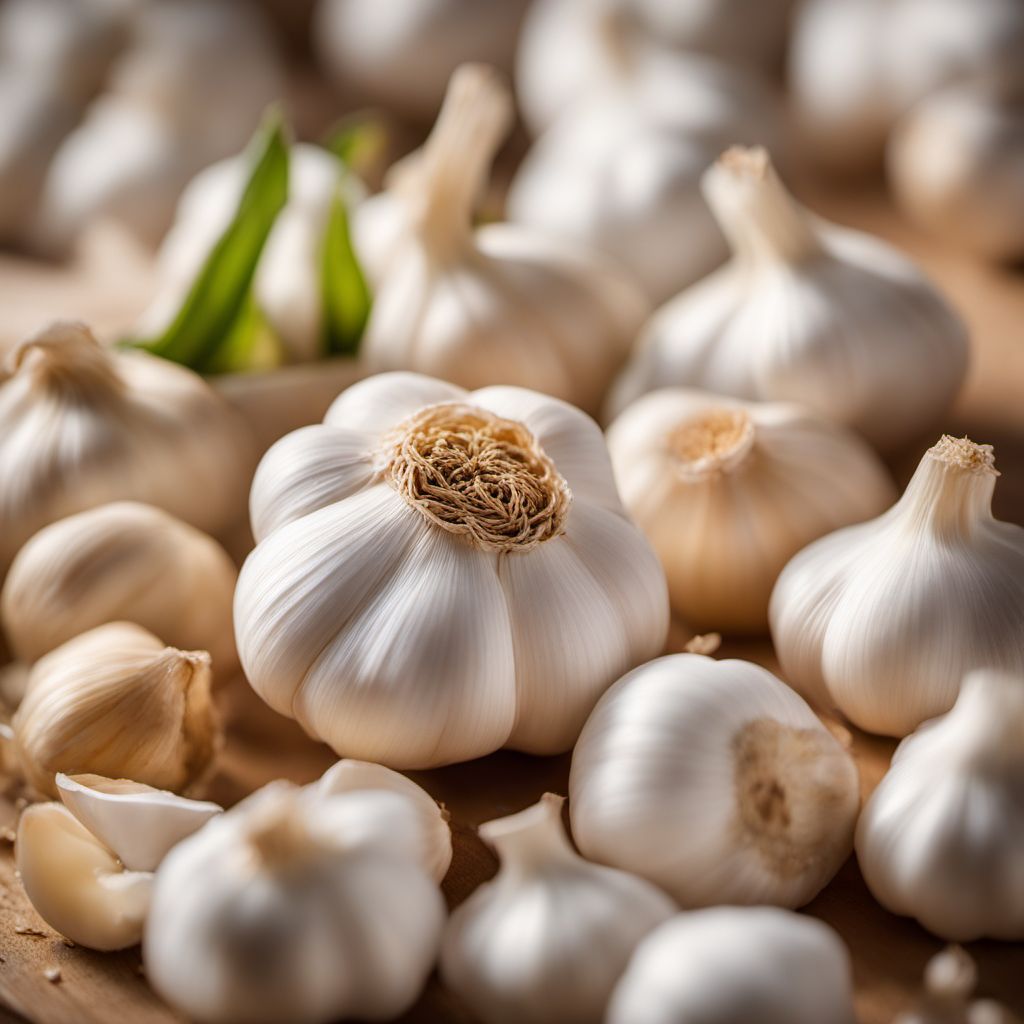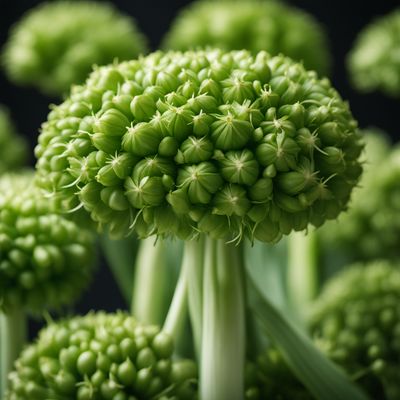
Ingredient
Garlic and similar-
The Aromatic Bulb
Garlic and similar ingredients, such as shallots and onions, belong to the allium family and are characterized by their pungent aroma and sharp taste. They have a firm texture and come in various sizes and colors, ranging from white to purple. When cooked, they develop a sweet and savory flavor, enhancing the overall taste of the dish.
Origins and history
Garlic has been cultivated for thousands of years and is believed to have originated in Central Asia. It has been used in various cuisines and cultures throughout history, including ancient Egypt, Greece, and China. Garlic was highly valued for its medicinal properties and was even used as currency in ancient Egypt. Today, it is widely used in Mediterranean, Asian, and Middle Eastern cuisines.
Nutritional information
Garlic and similar ingredients are low in calories and fat, while being rich in vitamins and minerals. They contain compounds that have been associated with potential health benefits, such as reducing blood pressure and boosting the immune system.
Allergens
Some individuals may be allergic to garlic and similar ingredients, experiencing symptoms like skin rashes, digestive issues, or respiratory problems.
How to select
When selecting garlic, choose bulbs that are firm and plump with dry, papery skin. Avoid bulbs that are soft, moldy, or have green sprouts, as these indicate age or spoilage. For shallots and onions, look for ones that are firm, with no signs of soft spots or mold. The skin should be dry and intact.
Storage recommendations
Store garlic and similar ingredients in a cool, dry place away from direct sunlight. Avoid storing them in the refrigerator, as it can cause them to sprout or become rubbery. Shallots and onions can be stored in a cool, dark pantry or a mesh bag to allow for air circulation.
How to produce
Garlic and similar ingredients can be easily grown in home gardens. Plant cloves in well-drained soil, ensuring they receive adequate sunlight and water. Harvest when the leaves turn yellow and dry out, typically after 8-10 months.
Preparation tips
To prepare garlic, separate the cloves from the bulb and remove the skin. Crush, mince, or slice according to the recipe's requirements. Shallots can be peeled and sliced or diced, while onions can be chopped or caramelized. When cooking with garlic and similar ingredients, add them early in the cooking process to infuse the dish with their flavors. Avoid overcooking, as it can result in a bitter taste.
Substitutions
Shallots and onions can be used as substitutes for garlic, although they have milder flavors. Garlic powder or granules can also be used as a substitute, but the flavor will be less intense. If a recipe calls for shallots or onions, garlic can be used as a substitute, but the taste will be stronger.
Culinary uses
Garlic and similar ingredients are versatile and used in a wide range of culinary applications. They are commonly used as a base for sauces, soups, and stews, providing a savory foundation. They can be sautéed, roasted, or used raw in dressings and marinades. Garlic is a staple in Mediterranean cuisine, while shallots are often used in French cooking. Onions are used in various cuisines worldwide, from Indian curries to American burgers.
Availability
Garlic and similar ingredients are widely available in grocery stores, supermarkets, and farmers markets worldwide.

